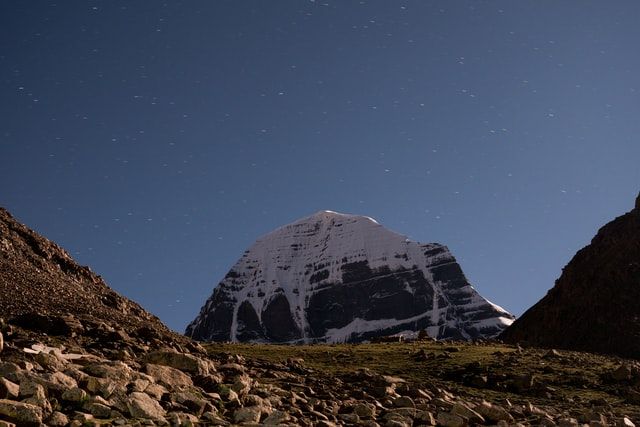
Rich in symbolism, tadasana comes from the Sanskrit words tada (mountain) and asana (posture, or seat). Mountain Pose is the essence of stability and foundation, and as such, contains the building blocks for every other posture in yoga.
The posture itself promotes the stillness, strength, relaxed power, and stability we associate with mountains.
An author explains the inseparable relationship between mountains and rivers, both represented by the Indian god Himavat, who represents the Himalayas and is also considered the father of Ganga Devi, the goddess of the Ganges, India’s most sacred river.
“When we stand in tadasana, the head, being nearest to heaven, is where we receive the blessings that flow through the rest of our body like a river,” she says.
The even stance of Mountain Pose—the lengthened spine and steady base—sets the tone for practice.
In India, there is a mountain called Mount Kailas with two lakes—one shaped like the sun and the other like a crescent moon, which represents hatha (ha = sun, tha = moon) yoga. Mount Kailas is considered the seventh chakra—sahasrara. The two lakes have been likened to the two streams of energy (ida and pingala nadis) that rise up one central channel (sushumna nadi) moving toward the highest level of consciousness. Mount Kailas is considered a sacred mountain.
When we stand in tadasana, we are equally grounded and arising. Our base is firm, yet we reach upward toward the heavens. Our spine is situated as it would be during meditation, ideal for the free flow of prana (life force) throughout the body. Take the time to connect to this energy in tadasana. Doing so can help you to maintain it throughout your practice.
https://editor.mnweg.org/mnw/dokument/phase-11-mountain-pose
You try to convince him/her of the opposite. Use the information of the text or your own experiences. Try to write about 260 - 300 words.
https://editor.mnweg.org/mnw/dokument/phase-11-mountain-pose


